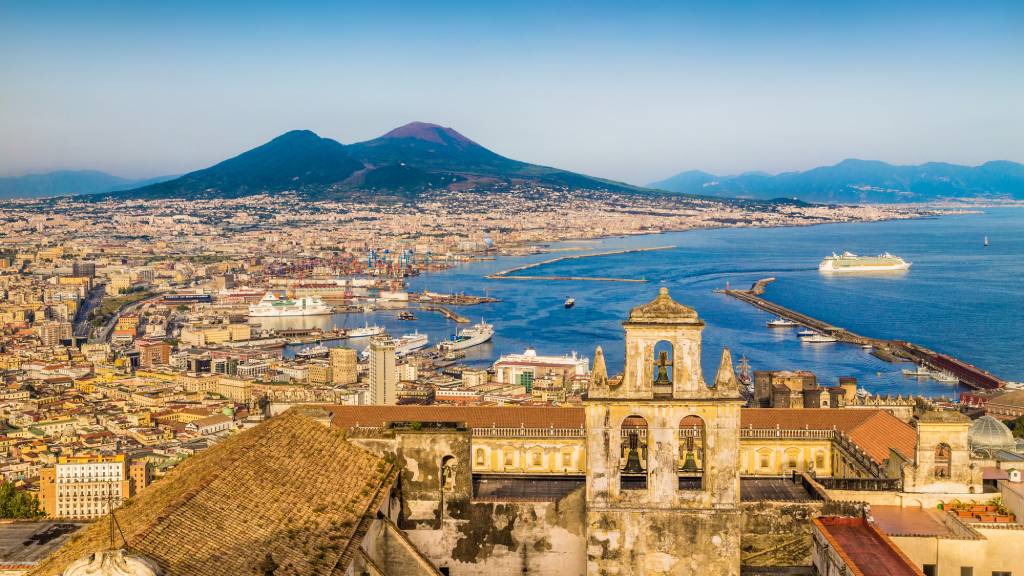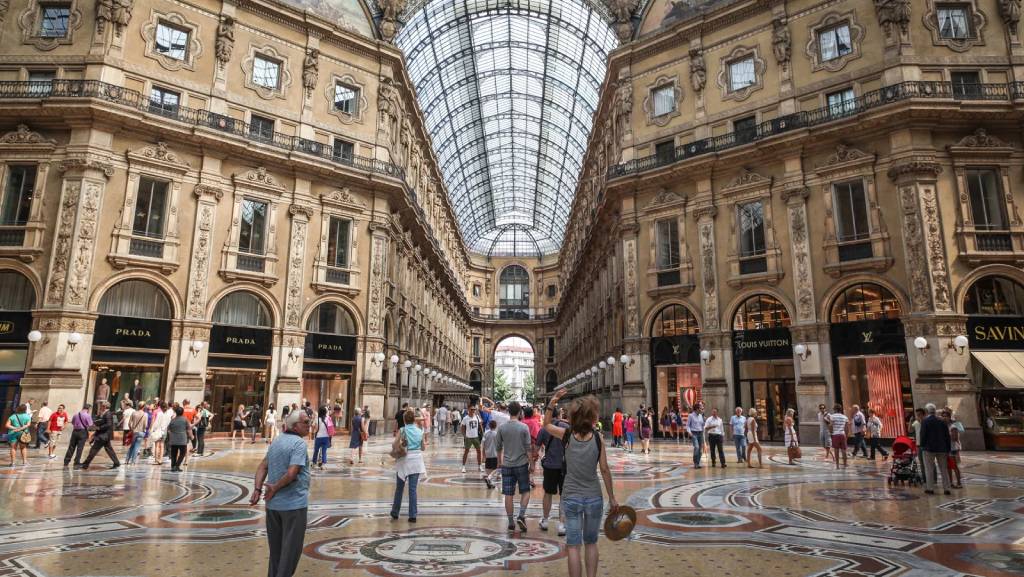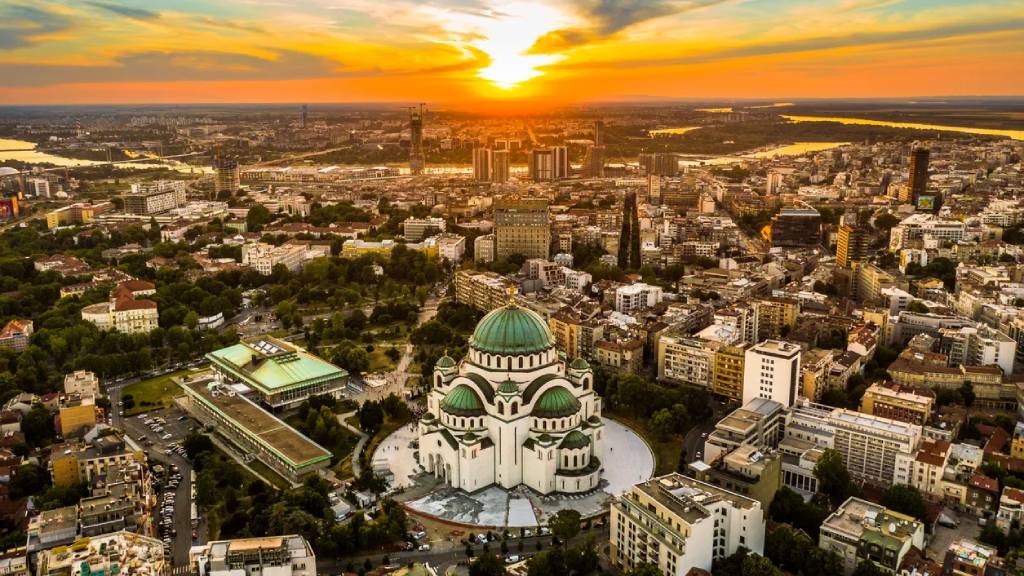
Naples is pure, vibrant Italian energy—a beautiful, slightly chaotic explosion of history, color, and flavor. Stepping into this city is like diving into a hyper-real movie; the streets are loud, the laundry hangs overhead like festive banners, and the views of Mount Vesuvius are absolutely spectacular. I’ve never eaten better pizza in my life—it’s the birthplace, after all, and they take it seriously. I also love how easy it is to tap into the ancient world, with Pompeii and Herculaneum just a short train ride away. If you’re looking for an authentic, passionate, and delicious Southern Italian experience, this is the place. Get ready for a sensory overload! Keep reading for my guide to navigating this unforgettable port city.
Why Visit Naples?
Naples is one of the oldest continually inhabited cities in the world, a fiery cultural center that offers unparalleled history and some of the best food on the planet. Here’s why you need to put Naples on your list:
- The Birthplace of Pizza: Forget what you know; real Neapolitan pizza is an art form. Eating a classic *Margherita* here is a life-changing experience.
- Mount Vesuvius & Pompeii: Easily access the legendary Roman cities of Pompeii and Herculaneum, perfectly preserved by the 79 AD eruption.
- Art & Archaeology: Visit the National Archaeological Museum, home to some of the world’s finest Roman artifacts, many from the Pompeii digs.
- The Historic Center: Explore the UNESCO-listed core, including the bustling *Spaccanapoli* street, filled with baroque churches and hidden courtyards.
- Gateway to the Coast: Naples is the perfect launchpad for visiting the stunning Amalfi Coast and the glamorous islands of Capri and Ischia.
Naples is a passionate, gritty, and beautiful city that offers a raw and unforgettable taste of Southern Italian life.
What Are the Best Things to Do in Naples? (For Your First Visit)
Pompeii
While not technically in Naples, it is an unmissable day trip. The ruins of the Roman city destroyed by Mount Vesuvius in 79 AD offer a unique look into ancient life. Take the Circumvesuviana train or a dedicated tour. Day Trips from Naples to Pompeii and Mount Vesuvius via Viator.
Naples Underground (Napoli Sotterranea)
A fascinating network of tunnels, Greek-Roman aqueducts, and air-raid shelters running beneath the modern city. It is a 2,400-year journey through history. Access Ticket and Guided Tour of Naples Underground via GetYourGuide.
National Archaeological Museum of Naples (MANN)
Home to one of the world’s most important collections of Roman artifacts, including many items recovered from Pompeii and Herculaneum, as well as the Farnese Collection. Priority Entrance Tickets to MANN on Viator.
Sansevero Chapel (Museo Cappella Sansevero)
Famous for the **Veiled Christ** (*Cristo Velato*) statue, a marble sculpture masterpiece with incredibly realistic details of the veil. Tickets are limited and must be booked well in advance. Look for combined tours including guaranteed entry to the Veiled Christ on TripAdvisor.
Castel dell’Ovo
Naples’ oldest standing castle, situated on a picturesque island (connected by a bridge). It offers fantastic views of the bay, Mount Vesuvius, and the city. Entrance is usually free.
Mount Vesuvius (Monte Vesuvio)
The active volcano that dominates the landscape. You can hike up to the crater. This trip is often combined with a visit to Pompeii or Herculaneum. Roundtrip Transfer or Vesuvius Entry Tickets via GetYourGuide.
Catacombs of San Gennaro
The largest underground burial area in Campania, featuring ancient frescoes and mosaics. They offer a unique perspective on Naples’ early Christian history. Ticket and Guided Tour of the Catacombs via GetYourGuide.
Spaccanapoli and the Historic Center
The beating heart of Naples, a main street that “splits” the city. This is where authentic Neapolitan life happens, filled with historic churches, street food vendors, and the famous Via San Gregorio Armeno (Christmas Alley).
Royal Palace of Naples (Palazzo Reale)
Located in Piazza del Plebiscito, this palace was the residence of Spanish Viceroys and Bourbon Kings. Its royal apartments and grand Staircase of Honor are stunning. Visit the Royal Palace with a tour option via Viator.
Piazza del Plebiscito and Teatro di San Carlo
Naples’ most iconic square. Across from the Royal Palace is the Royal Basilica of San Francesco di Paola, and adjacent is the **Teatro di San Carlo**, the oldest continuously active opera house in the world. Guided Tour of Teatro di San Carlo via GetYourGuide.
/tp_widget]
What’s the Best Month to Visit Naples?
**May and September** are the prime months. Both offer the perfect balance: warm, sunny weather (highs in the 70s and low 80s °F) for exploring Pompeii and taking ferry trips to Capri, but without the intense crowds and oppressive heat of mid-summer. Spring is excellent for sightseeing and Easter celebrations. October is also a great choice, maintaining pleasant temperatures for a quieter experience. Winter is mild but can be rainy, though you’ll find great budget deals and the famous Christmas markets of San Gregorio Armeno in December.
/tp_widget]
How to Get to Naples
Naples is served by Naples International Airport (NAP), located just 6 km from the central station. It is a well-connected airport—compare deals on WayAway for direct routes from European and domestic hubs. From the airport:
- Alibus: This shuttle bus connects the airport to Napoli Centrale (main train station) and the Port of Naples (Molo Beverello). ($5.50, 30–40 min).
- Taxi: Fixed-rate tariffs are available for travel between the airport and pre-defined central areas. Always confirm the rate before leaving. ($20–25, 20–30 min).
The central station, Napoli Centrale/Piazza Garibaldi, is a key high-speed rail terminal and the heart of the city’s chaotic transport network, serving the Circumvesuviana line for destinations like Pompeii and Sorrento.
How to Get Around Naples
Naples is energetic, vast, and built on hills, making public transport essential. While the historic center is walkable, moving between different quarters (like Vomero or Chiaia) requires using the network.
- Metro Line 1: The most reliable and fastest line, famous for its “Art Stations.” It connects the city center, the port, and the hilly Vomero district.
- Funiculars: Essential for vertical movement. Four lines (Centrale, Chiaia, Montesanto, Mergellina) connect the lower city to the upper residential areas.
- Circumvesuviana: A separate, regional train line used for day trips to major archaeological sites (Pompeii, Herculaneum) and the Amalfi Coast (Sorrento).
- Bus: The bus system is extensive but can be confusing and suffer from heavy traffic delays.
- Car Rental: Highly discouraged for use in the city due to traffic and parking difficulty. If needed for a long drive outside the region, rent via DiscoverCars outside the ZTL.
Tips for Tourists Using Transport:
- Purchase the Unico Campania integrated ticket, which allows travel on the metro, buses, and funiculars (but usually not the Circumvesuviana for Pompeii).
- The Circumvesuviana can be crowded; be aware of your belongings, especially on routes to tourist sites.
- Use the Funiculars to save your legs when exploring the upper districts.
Conclusion: Naples offers an intoxicating mix of chaotic energy, incredible history, and world-renowned cuisine. Embrace the vibrancy of the city, use the excellent, deep Metro Line 1, and rely on the funiculars to tackle the vertical landscape. Plan your journey using the comprehensive network to safely and quickly connect you to pizza, castles, and nearby ancient ruins. Explore Naples’ hidden gems and rich history with our premium guide!
Note: This article contains affiliate links. If you purchase something I’ve recommended, I’ll earn a small commission at no extra cost to you. I really appreciate your support and I hope this guide helps you ♡









